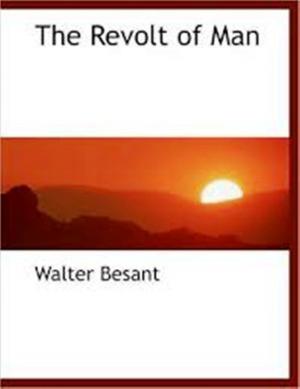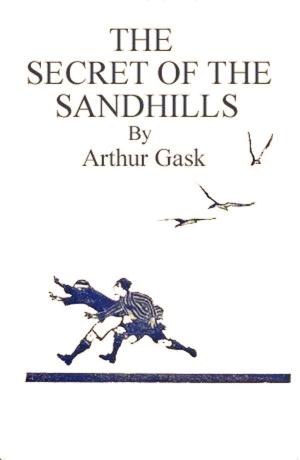| Author: | William Harrison Ainsworth | ISBN: | 1230000139138 |
| Publisher: | WDS Publishing | Publication: | June 5, 2013 |
| Imprint: | Language: | English |
| Author: | William Harrison Ainsworth |
| ISBN: | 1230000139138 |
| Publisher: | WDS Publishing |
| Publication: | June 5, 2013 |
| Imprint: | |
| Language: | English |
It is the rounded summit of a hill; or, to speak with greater precision, the mid-summit of a series of soft bosomy eminences, springing from a hilly ridge, that trends towards the coast, and rises and falls smoothly and gently in its course, like the waves of a slightly agitated sea. The lovely mount is covered with short elastic sward, redolent of thyme and other sweet-smelling herbs, and is crowned by an ancient bowl-shaped British barrow, on the bank of which we will seat ourselves, and look around.
How pleasing is the prospect! how fresh the air that visits us! No breeze so fine and invigorating as that of these Sussex downs; no turf so springy to the foot as their smooth greensward. A flock of larks flies past us, and a cloud of mingled rooks and starlings wheels overhead. Mark yon little T-shaped cuttings on the slope below us—those are the snares set by the shepherds for the delicious wheatear—our English ortolan. The fairies still haunt this spot, and hold their midnight revels upon it, as yon dark-green rings testify. The common folk hereabouts term the good people “Pharisees,” and style those emerald circles “hag-tracks:” why, we care not to inquire. Enough for us, the fairies are not altogether gone. A smooth, soft carpet is here spread out for Oberon and Titania and their attendant elves to dance upon by moonlight; and there is no lack of mushrooms to form tables for Puck’s banquets.
Own that no hills can be more beautiful than these South Downs. They may want height, boldness, grandeur, sublimity; they possess not forest, rock, torrent, or ravine; but they have gentleness, softness, and other endearing attributes. We will not attempt to delineate the slight but infinite varieties of form and aspect that distinguish one hill from its neighbour; for though a strong family likeness marks them all, each down has an individual character. Regarded in combination with each other, the high ranges form an exquisite picture.
Contemplation of such a scene soothes rather than excites, and inspires only feelings of placid enjoyment. We are called upon for no violent emotion. We are not required to admire Nature in her wildest and most savage aspect. We have a peaceful landscape before us, of a primitive character, and possessing accompaniments of pastoral life. Yonder is the shepherd, with crook and dog, watching his flock browse on the thymy slopes—the unequalled sheep of the South Downs, remember. At our feet lies a well-cultivated valley, with broad patches of turnip and mangel-wurzel on one side, and a large stubble-field on the other, where the ploughman with his yoke of patient oxen is at work. In this valley you may note a farm-shed and a sheepfold, with rows of haystacks and cornstacks at various points, evidencing the fertility of the soil. In front of us is the British Channel. A burst of sunshine illumines the tall white cliffs on the east, and gleams upon the far-off lighthouse. That pharos is on Beachy Head. On the near height overlooking the sea stands a windmill, while a solitary barn forms a landmark on that distant hill. Altogether, a charming picture.
But we have not yet fully examined it.
The beauteous hill, on the brow of which we are seated, has necessarily a valley on either side. On the right, and immediately beneath us, is a pretty little village, nestling amid a grove of trees, above whose tops you may discern the tower of a small, grey old church. With this village we trust to make you more intimately acquainted by-and-by. It is Ovingdean. On the left, and nearer the sea, you may discern another, and considerably larger village than Ovingdean, almost as picturesque as the latter, and possessing a grey, antique church at its northern extremity. This second village is Rottingdean.
It is the rounded summit of a hill; or, to speak with greater precision, the mid-summit of a series of soft bosomy eminences, springing from a hilly ridge, that trends towards the coast, and rises and falls smoothly and gently in its course, like the waves of a slightly agitated sea. The lovely mount is covered with short elastic sward, redolent of thyme and other sweet-smelling herbs, and is crowned by an ancient bowl-shaped British barrow, on the bank of which we will seat ourselves, and look around.
How pleasing is the prospect! how fresh the air that visits us! No breeze so fine and invigorating as that of these Sussex downs; no turf so springy to the foot as their smooth greensward. A flock of larks flies past us, and a cloud of mingled rooks and starlings wheels overhead. Mark yon little T-shaped cuttings on the slope below us—those are the snares set by the shepherds for the delicious wheatear—our English ortolan. The fairies still haunt this spot, and hold their midnight revels upon it, as yon dark-green rings testify. The common folk hereabouts term the good people “Pharisees,” and style those emerald circles “hag-tracks:” why, we care not to inquire. Enough for us, the fairies are not altogether gone. A smooth, soft carpet is here spread out for Oberon and Titania and their attendant elves to dance upon by moonlight; and there is no lack of mushrooms to form tables for Puck’s banquets.
Own that no hills can be more beautiful than these South Downs. They may want height, boldness, grandeur, sublimity; they possess not forest, rock, torrent, or ravine; but they have gentleness, softness, and other endearing attributes. We will not attempt to delineate the slight but infinite varieties of form and aspect that distinguish one hill from its neighbour; for though a strong family likeness marks them all, each down has an individual character. Regarded in combination with each other, the high ranges form an exquisite picture.
Contemplation of such a scene soothes rather than excites, and inspires only feelings of placid enjoyment. We are called upon for no violent emotion. We are not required to admire Nature in her wildest and most savage aspect. We have a peaceful landscape before us, of a primitive character, and possessing accompaniments of pastoral life. Yonder is the shepherd, with crook and dog, watching his flock browse on the thymy slopes—the unequalled sheep of the South Downs, remember. At our feet lies a well-cultivated valley, with broad patches of turnip and mangel-wurzel on one side, and a large stubble-field on the other, where the ploughman with his yoke of patient oxen is at work. In this valley you may note a farm-shed and a sheepfold, with rows of haystacks and cornstacks at various points, evidencing the fertility of the soil. In front of us is the British Channel. A burst of sunshine illumines the tall white cliffs on the east, and gleams upon the far-off lighthouse. That pharos is on Beachy Head. On the near height overlooking the sea stands a windmill, while a solitary barn forms a landmark on that distant hill. Altogether, a charming picture.
But we have not yet fully examined it.
The beauteous hill, on the brow of which we are seated, has necessarily a valley on either side. On the right, and immediately beneath us, is a pretty little village, nestling amid a grove of trees, above whose tops you may discern the tower of a small, grey old church. With this village we trust to make you more intimately acquainted by-and-by. It is Ovingdean. On the left, and nearer the sea, you may discern another, and considerably larger village than Ovingdean, almost as picturesque as the latter, and possessing a grey, antique church at its northern extremity. This second village is Rottingdean.















